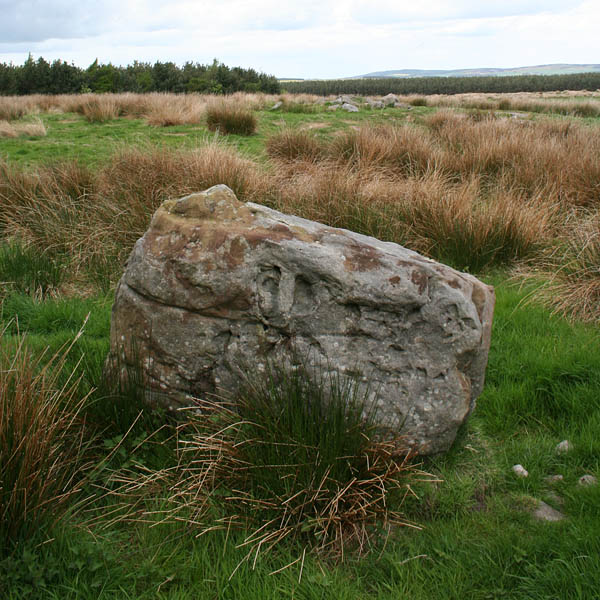



Line of big upstanding rocks in the poblat, not far from the basins. Biggest stone is about 2m tall.

A row of big basins in the poblat. Each one is about 50cm diameter.

The little artificial cave built into the side of the talaoit.

The lovely smooth polissoir on the right hand side of the central passage.

Taken from ‘Our Ancient Monuments And The Land Around Them’ by Charles Philip Kains-Jackson, 1880






Slightly misty at the witching hour, with a distinct lack of ghosties.

The same stone as is shown in Ocifant’s photos, this photo taken a couple of weeks before it was attacked.

Taken from ‘Our Ancient Monuments And The Land Around Them’ by Charles Philip Kains-Jackson, 1880

Allegedly, this oak coffin is intended to be on display in the new improved Museum of Antiquities in Newcastle.


The stones on the northern side of the track. There are a few others just ext to those visible on this picture, lying prostrate under the foliage.




Taken from ‘Our Ancient Monuments And The Land Around Them’ by Charles Philip Kains-Jackson, 1880

Taken from ‘Our Ancient Monuments And The Land Around Them’ by Charles Philip Kains-Jackson, 1880.

Taken from ‘Our Ancient Monuments And The Land Around Them’ by Charles Philip Kains-Jackson, 1880.

Taken from ‘Our Ancient Monuments And The Land Around Them’ by Charles Philip Kains-Jackson, 1880.

Lost carvings of Doddington Moor







Not the Sandyway Heads stone, this one was found in a wall in Ingoe, and is now in the museum at Alnwick Castle.

From ‘Incised Markings on Stone Found in the County of Northumberland, Argyllshire and Other Places’, 1869

From ‘Incised Markings on Stone Found in the County of Northumberland, Argyllshire and Other Places’, 1869

From ‘Incised Markings on Stone Found in the County of Northumberland, Argyllshire and Other Places’, 1869

From ‘Incised Markings on Stone Found in the County of Northumberland, Argyllshire and Other Places’, 1869

The entrance to Lordenshaws hillfort. Engraving made in 1903.
Taken from ‘Upper Coquetdale’, by David Dippie Dixon.

This is a repro of an old woodcut dated 1575 (Thanks to Lefturn for that info...) I have no idea which book the reproduction was in, or who ‘RF’ was.









The cup and ring carving is under the big boulder

